Having sciatic nerve pain is one of the more painful ailments you can have. It limits your mobility and can make simple tasks like walking miserable. Keep reading to find out where to correctly place the electrode pads to help reduce and alleviate your pain.
TENS Pad Placement for Sciatica Pain
The way it works is you stick the pads to your body, usually the first electrode going where the pain begins, and the last where it ends. In most cases, this would mean your lower back to the thigh, leg, or foot. You want to avoid placing electrodes on the joints, such as directly behind the knee, since they won’t stick well there.
Pads should never be placed on eyes or on opposite sides of your chest.
The strength and frequency of the pulses, to fit your personal needs, are typically adjustable. A therapeutic session with a TENS unit typically lasts from 30 minutes to several hours, and may be done many times a day.
The best rule of thumb is to simply run your hands over your body, gently pressing to determine the most tender centers of the pain. You can target the entire length of the pain, or focus on a particular, smaller area. It’s usually best to consult a physician first, however. Though it is counter intuitive, he or she may even have reasons to place the pads on areas that are less painful, if he believes it will be more effective.
Once the pads are in place and the machine turned on, the TENS unit will send electrical pulses that stimulate the nerves, and you should feel a slight tingling sensation, but nothing painful.
Wondering how high you can set your TENS unit? Check out my article here
Best TENS Unit For Sciatica
This is the exact TENS unit that I use. It is perfect for alleviating many common types of pain especially for your sciatica nerve pain. The iReliev is a great little device and has a lot going for it. It is well under $80 and has several programs to choose from and is small enough to fit in your pocket.
You do not need to spend hundreds of dollars to get a quality TENS unit and iReliev gives you a ton of value for the price being paid. Best part is they are based in Dallas, Texas and have phenomenal customer service FREE shipping and delivery in less than 5 days.
Get yours today on the iReliev website by clicking here.
Want to know where else a TENS unit can be placed? Check out my TENS placement guide for how to use one for-
Knee Pain
Neck Pain
Shoulder Pain
Tension Headaches
Golfer’s Elbow
Plantar Fasciitis
Rotator Cuff Pain
Restless Leg Syndrome
Ulnar Nerve Pain
TMJ Pain
Check out the this Compression Brace for Hip, Sciatica Nerve Pain from Bodymate.
This brace is perfect for using after your TENS therapy treatment.
The benefits of using this brace are:
- Increases blood flow
- Reduces recovery time by providing a soothing compression relief to the pain overall
- Can be worn under your clothes thanks to the thin but very supportive neoprene material.
- Custom fit to your size
TENS has been becoming a more popular choice as a noninvasive treatment with no serious side effects
The device comes in the form of a small battery pack, ranging from the size of a flip phone to a cassette Walkman at the largest. A cable connects the unit to several electrode pads.
Many devices have a timer, so you can multitask or relax while the electrodes are attached. Just be sure to never use a TENS unit while driving or bathing. And although the TENS unit is generally very safe, it may not be suitable for someone with a pacemaker or heart condition, epilepsy, or in the early stages of pregnancy.
The TENS, or transcutaneous electric nerve stimulation, unit is a small, battery-operated device that sends electrical pulses into nerves, to effectively ease pain. It is used for treating several types of pain, and has been becoming more and popular as a treatment for sciatica.
If you suffer from sciatica, you already know it’s a condition that occurs when contraction of muscles, erosion of spinal cushion, or another problem in your spinal region causes pinching of the sciatic nerve.
The sciatic nerve is the longest nerve in the body, a major connection running from the base of the spine, through the pelvis, down the thigh, and into the feet and toes. Unfortunately, pressure on this nerve can cause severe pain in all these areas.
90% of the time sciatica is caused a herniated spinal disc, a tear usually the result of the body simply aging, though it could also occur from improper heavy lifting or another injury, as well as other medical conditions affecting the spine.
Sciatica is fairly common among the ageing population, affecting around 40% of people in their lifetime, mostly between the ages of 40 and 50.
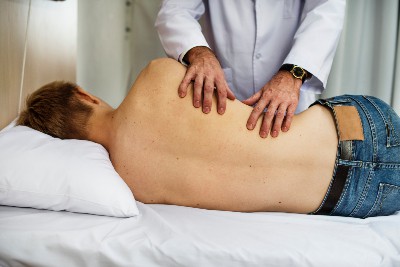 Causes of Sciatica
Causes of Sciatica
Risk factors include height, stress, physical activity, cigarette smoking and alcohol use, and even occupation (for instance, driving a crane that vibrates heavily).
Additionally, you are more prone if you suffer from diabetes, as that disease wears out the nerves.
Symptoms of sciatica include sharp, persistent pain in areas between the lower back, buttock, leg, and toes. One telltale sign is if the pain occurs in only one side of the body.
Usually this pain worsens when sitting or standing, but improves when lying down or walking. It often spikes when you make a sudden movement such as standing up from a seated position, or even when you cough or sneeze.
A common diagnostic test involves the patient raising his leg while lying down to see whether this causes a sharp pain. A doctor can also help determine the root cause of the sciatica, which, again, is most often a herniated disc, but could be other conditions, including spinal stenosis or tumors.
Aside from pain, some sufferers may experience weakness, numbness, or a tingling sensation in the leg.
In severe cases, sciatica may also cause a lack of control over the bowel or bladder.
If you’re lucky, the pain will go away after a few days of rest, but it could persist for longer or become chronic. Because of the level of discomfort and interference with daily functions, many people will seek treatment as sciatica continues to flare up.
Besides a balance of rest and exercise, the next course is usually an anti-inflammatory or nerve-pain medication, steroid injections, or in severe cases, surgery.
When pain persists, steroids are often be one of the go-to treatments.
A 2015 study from The Journal of the American Medical Association, however, reports that patients in a clinical trial did not show immediate improvement with steroids compared to a placebo, and showed only mild improvement over a longer course.
Furthermore, the FDA has recently stated that there may be rare, but serious neurological side effects caused by the steroids. Results are inconclusive for alternative treatments like going to a chiropractor or acupuncture, and are often only anecdotal.
Fortunately 80%-90% of patients do not require surgery, but the pain is often enough that some treatment is required.
A TENS Unit Does Not Have Any Majot Side Effects
But could cause some skin irritation if certain precautions are not taken. Generally, this is not an issue, but if rashes occur, you should clean the placement area of your skin before sticking the pads.
Additionally, you should avoid placing them in an area that is already sensitive, and never over a cut or open wound. It could be helpful to have a few spots to use that you can rotate, if possible.
Some people may occasionally experience muscle twitching, as well as pain or soreness if the machine is used improperly. If you do have pain or twitching, this means that either the settings are too high or that you are using the device too frequently.
These problems can be stopped by simply lowering the strength of the electric impulses or taking a break from use.
Furthermore, there has been progress in accessibility of a TENS unit. Several years back, the FDA approved TENS for the treatment of migraines, and it is now cleared as an over the counter device for sciatica.
Many insurance plans will cover TENS, but it can also be purchased out-of-pocket at a pharmacy or on Amazon starting at about $50. What machine is right for you depends mostly on how much control you need to customize the settings. Typically, less expensive machines allow for less tweaking, and may have pre-programmed modes only.
Based on your needs, this could be perfectly fine, and in may cases you may not even need the full range of power either. More customizable devices can run closer to $100 or $150.
Many of the premium features these offer are nice, but not absolutely necessary, such as remembering the last settings you used so you don’t have to select each time, or a touch screen versus buttons.
If you’re on the fence, you don’t necessarily have to make a purchase yet: you may be able to try or borrow one first through your physician or pain specialist.
So How Does a TENS Unit Work?
Clinical trials have already provided evidence that TENS is a valuable painkiller because of two effects. First, the electric pulses block nerve receptors from alerting your brain that you’re in pain. Second, TENS causes an increase in the production of endorphins in the spinal fluid, which improves your good feelings and tolerance of the discomfort.
The machine can also improve circulation, which can ease stiffness in the affected areas. And besides being a non-invasive alternative, one of the biggest pros of the TENS unit is that it works immediately. When severe pain is a factor, speed means everything.
Exercises for Sciatic Nerve Pain
Though a TENSs unit relieves pain on its own, most professionals recommend using it in conjunction with exercise (or physical therapy if that is more appropriate for your case). The main goal of exercise to relieve sciatic nerve pain is to stretch affected areas and release built up tension there.
Doing so eases the inflammation that’s pressing down on the nerve. And while it’s never a bad idea to consult your physician, pain specialist, or physical therapist for a proper exercise plan, there are plenty of handy moves for general relief available online.
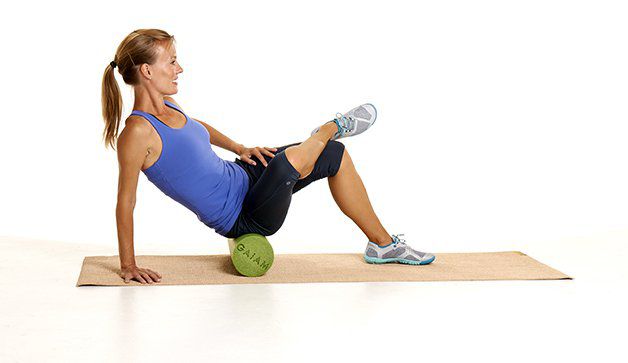
Many of the popular stretches recommended are adopted from yoga, such as the pigeon pose. This pose (see below), where you are upright with one leg folded towards your torso and the other stretched straight back, targets every area surrounding and affecting the sciatic nerve.
This stretch and others like it also strengthen your piriformis, a muscle that connects the bottom of your spine to your femur, and lies directly over the sciatic nerve.
Other stretches can be very simple and gentle—rotating your spine, stretching your hamstrings, or bending your legs, all of which loosen and unknot muscles and ligaments directly along the path of the sciatic nerve, in addition to opening blood flow. Even jumping jacks can help.
Depending on what works best for you, exercises can of course be done at a gym or as part of a class, but also at home. And for pain at the office, there are measures you can take there as well. In fact, if you’re sitting at a desk all day, even taking short breaks to get up and move can help stimulate blood flow and may provide some relief.
Being Sedentary Is The Biggest Cause of Sciatica.
The good news is that since TENS units are so portable, you can use the device at work as well to provide all day relief when you need it.
Any appropriate stretches can be beneficial for your pain management, but in many cases, yoga or Pilates can be especially worth considering, as most will include the much needed hip stretches, as well as flexing of the whole body.
In these schools of exercise, a lot of attention is given to strengthening your “core” as well—the abdominal muscles, obliques, and area around the spine—which can help fortify your back, and also improve posture.
Furthermore, his type of stretching can prevent injury from other activities such as sports or cardio exercise you may also be doing. Activity not only can potentially ease sciatic pain, but also prevent future flare-ups when done regularly.
The TENS unit really helps post-exercise to promote blood flow and ease any remaining inflammation. Even though exercise is beneficial, it can sometimes cause mild strain, which the TENS unit soothes.
Perhaps the most important rule to keep in mind here is if anything starts causing you worse pain, then stop doing it immediately. If the pain is severe enough to be debilitating, exercise may not always be an option.
The TENS unit is affordable, easy to use, and effective immediately.
For these reasons, they are being recommended by doctors and physical therapists to treat sciatica. Once you’re set up with a portable unit, you’re able to manage your pain independently at home or work. And you don’t have to make an appointment to receive more drugs or injections—you can simply strap it on and let do its job.
It is a great option to consider as a first line of treatment, before doing anything more invasive and could be a go-to measure any time discomfort arises.
Thank you for reading,
References
LINK 1: https://www.webmd.com/back-pain/guide/tens-for-back-pain
LINK 2: https://www.mayoclinic.org/diseases-conditions/sciatica/symptoms-causes/syc-20377435
LINK 3: https://www.ncbi.nlm.nih.gov/pmc/articles/PMC1895638/
LINK 4: https://www.spine-health.com/conditions/sciatica/sciatica-symptoms
LINK 5: http://www.jabfm.org/content/21/5/469.full
LINK 6: https://jamanetwork.com/journals/jama/fullarticle/2293294
LINK 7: https://www.medscape.com/viewarticle/878443
LINK 8: https://www.hindawi.com/journals/ecam/2017/9502718/
LINK 9: https://www.health.harvard.edu/pain/sciatica-of-all-the-nerve
LINK 10: https://www.tenspros.com/Where-to-put-TENS-Unit-Electrode-Pads-For-Sciatica_b_23.html
LINK 11: https://omronhealthcare.com/2014/01/10-tips-for-tens-pad-placement/
LINK 12: https://paindoctor.com/tens-unit-therapy-as-sciatica-treatment/
LINK 13: https://www.nhs.uk/conditions/transcutaneous-electrical-nerve-stimulation-tens/
LINK 14: https://www.menshealthcures.com/en_US/tens-unit-for-sciatica-pain/
LINK 15: https://www.livestrong.com/article/241493-benefits-of-a-tens-unit/
LINK 16: https://www.thegoodbody.com/what-is-the-best-tens-unit/
LINK 17: https://patient.info/health/painkillers/tens-machines
LINK 18: https://www.ncbi.nlm.nih.gov/pmc/articles/PMC4186747/
LINK 19: https://www.activlifetech.com.au/sciatica/
LINK 20: https://www.prevention.com/fitness/workouts/a20475619/stretches-for-sciatic-nerve-pain/
LINK 21: http://stretchcoach.com/articles/piriformis-syndrome/
LINK 22: https://www.spine-health.com/blog/guide-finding-sciatica-relief-while-office


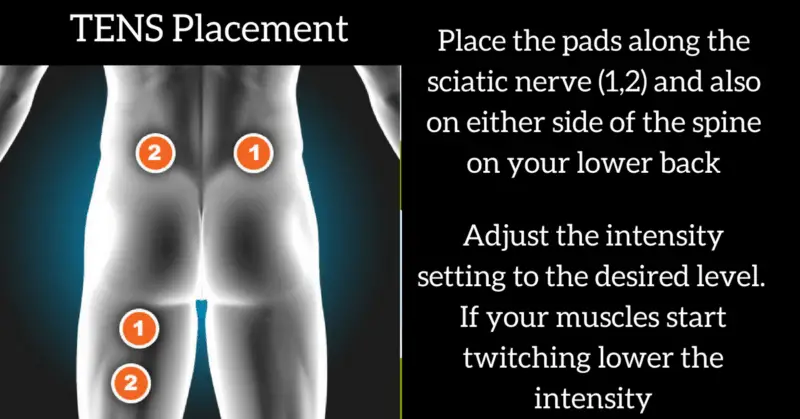


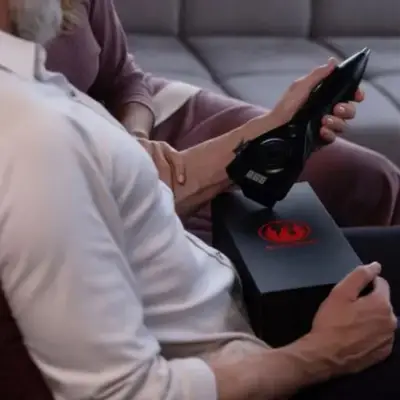

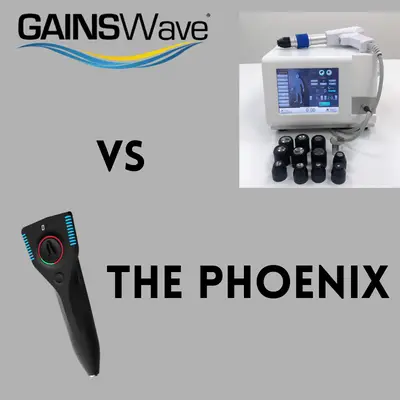
Leave a Reply
You must be logged in to post a comment.